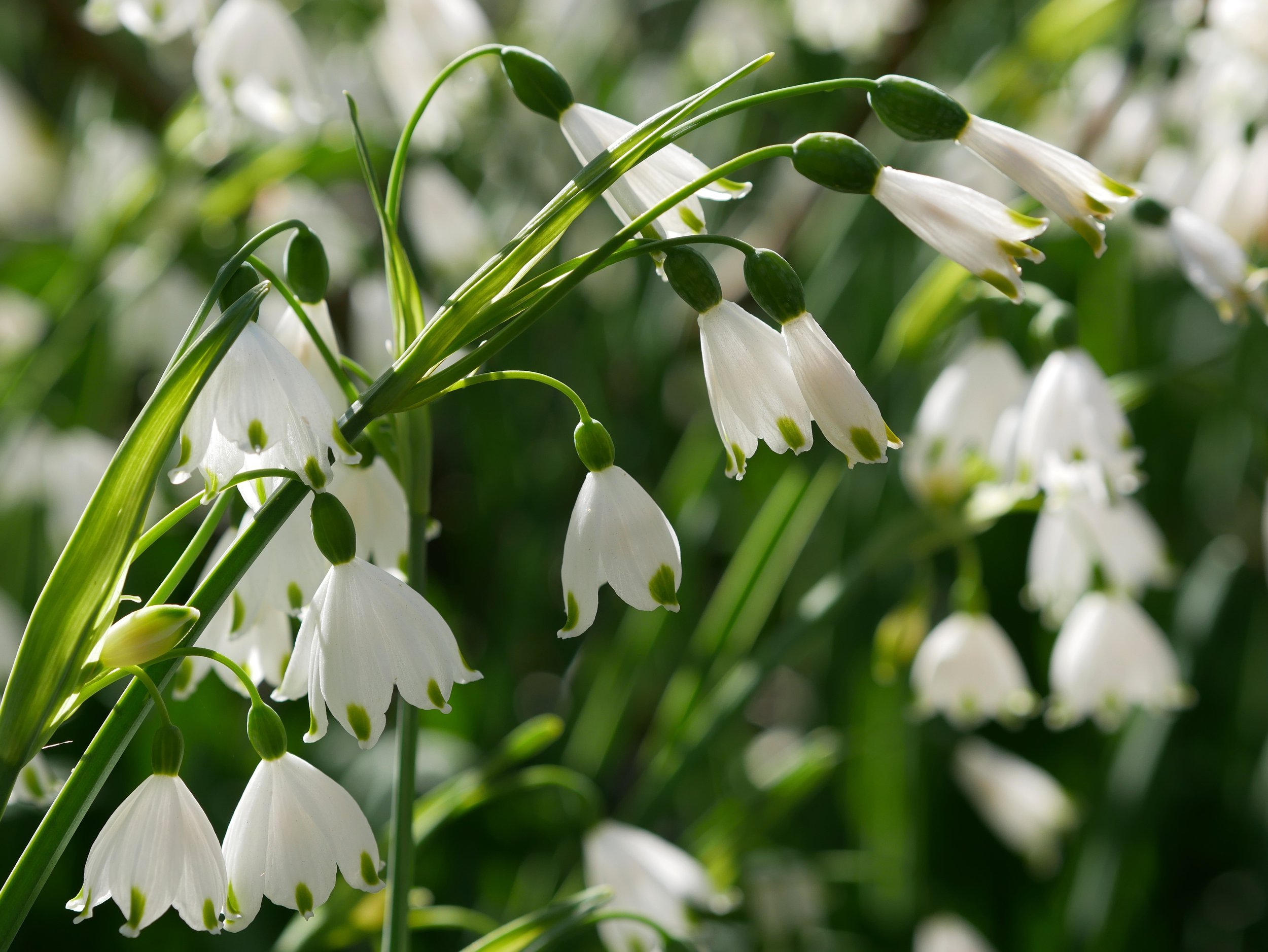Leucojum (pronounced loo-KOH-jum) is an elegant flower with delicate, drooping white blooms that look like petticoats. Spring Snowflake (L. vernum) flowers in very early spring. Summer Snowflake (L. aestivum) flowers mid-spring. Each tepal (think petal) has a blotch of green on it on its tip. Strap-like foliage resembles that of daffodils and averages 12 to 24 inches in length.
Snowflakes do well in part shade to full shade, and perform well under deciduous trees. They prefers dry soil when dormant, with added moisture when in flower. They are tolerant of heavy clay soils. The flowers are all held on the same side of the stem, so they lean gracefully to the side. They have the same gelatinous sap as daffodils, so should not be combined with other flowers in a vase.
Snowflakes look super when planted in large drifts, in woodland settings, or in rock gardens. Bulbs will multiply into good sized clumps. They prefer to remain undisturbed. Congestion doesn’t seem to bother them as long as they receive adequate nutrition from the soil. Add a sprinkle of lime and a little fertilizer each spring to keep them happy. The bulbs can be underplanted in a bed of Mondo Grass (Ophiopogon) or other shade-loving groundcovers.
Deer, rabbits, and voles avoid Snowflakes. They are not damaged by juglone, so can be planted under Black Walnut (Juglans nigra) trees. Bulbs and leaves are poisonous. Do not eat.
A third species, Leucojum auctumnle flowers in late summer to early fall. It is less popular that the spring-flowering types and is difficult to find in garden centers.
